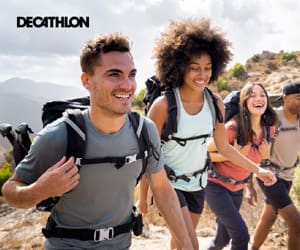The Ten Essentials are survival items that hiking and Scouting organisations recommend for safe travel in the bush.
The Ten Essentials first appeared in print in the third edition of Mountaineering Freedom of the Hills Mountaineers (January 1974). Many regional organisations and authors recommend that hikers, backpackers, and climbers rigorously ensure they have the ten essentials with them. However, personal preferences and differences in conditions may dictate otherwise and with experience most adventurers add or subtract from the list depending on the situation. Some lightweight hikers do not always carry all of the items and believe it is an acceptable risk they take in order to travel light and fast.
In 2003, the essential list was revised as part of the seventh edition of Mountaineering: The Freedom of the Hills to keep up with modern equipment. The current edition, 8th edition continues with the new essentials list with no major revisions. The new list takes a “systems” or functional approach.
According to the eighth edition of Mountaineering: The Freedom of the Hills book there are ten essentials, which are now referred to as the “classic” essentials. While still valid and widely used they do not reflect modern outdoor sports and all of the new gadgets that now are common.
Classic Essentials
- Map
- Compass (optionally supplemented with a GPS receiver)
- Sunglasses and sunscreen
- Extra clothing
- Headlamp (or torch)
- First-aid supplies
- Firestarter
- Matches
- Knife
- Extra food
Current Ten Essentials
- Navigation. Topographic map and assorted maps in waterproof container plus a magnetic compass, optional altimeter or GPS.
- Sun protection. Sunglasses, sunscreen for lips and skin, hat, clothing for sun protection.
- Insulation. Hat, gloves, jacket, extra clothing for coldest possible weather during current season.
- Illumination. Headlamp, flashlight, batteries. LED bulb is preferred to extend battery life.
- First-aid supplies, plus insect repellent.
- Fire. Butane lighter, matches in waterproof container.
- Repair kit and tools. Knives, multi-tool, scissors, pliers, screwdriver, trowel/shovel, duct tape, cable ties.
- Nutrition. Add extra food for one additional day (for emergency). Dry food is preferred to save weight and usually needs water.
- Hydration. Add extra 2 liters of water for one additional day (for emergency).
- Emergency shelter. Tarp, bivouac sack, space blanket, plastic tube tent, jumbo trash bags, insulated sleeping pad.
The textbook recommends supplementing the ten essentials with:
- Portable water purification and water bottles
- Ice axe and crampons for glacier or snowfield travel (if necessary)
- Signaling devices, such as a whistle, mobile phone, two-way radio, satellite phone, unbreakable signal mirror or flare, laser pointer.
Some experts recommend having duplicates of The Essentials in different sized kits: in pockets, on key rings, in pocket kits, belt pouches, belt packs, day packs, and backpacks.
Whether you are heading out on a short walk, half day hike, day hike, overnight hike or multi-day trek, consider always packing the Ten Essentials.











This is pretty much my basic load out. There’s a first aid/trauma kit and a survival kit in there as well. It has everything I need to get myself (and my companions) out of trouble for 48 hrs, if nothing else.
Media: https://www.facebook.com/photo.php?fbid=10159725644228359&set=p.10159725644228359&type=3
I generally have all ten in my pack in some form. For day hikes, I don’t take a full Repair kit and tools. I carry a small knife and scissors in my first aid kit which i feel is enough for most situations.
You missed the essential woofer by your side! 🐶 😃👌🏻
TJ Craig oops. Don’t tell him I forgot
Media: https://l.facebook.com/l.php?u=https%3A%2F%2Fmedia0.giphy.com%2Fmedia%2Fv1.Y2lkPTk5OWFjZWFjcmI2YW41YjAyYmMzNGZvMzY4aXFqdDc0dWlpd2VjNmNjZ3U0MzMzdyZlcD12MV9naWZzX3NlYXJjaCZjdD1n%2FDQ8fT85PAQxwAMLOI9%2Fgiphy.gif&h=AT1zGtfkNTIJganues9_DHJVnr24X9MJmGRG3u7okgstTJfYKcwH2vhcogk1uOLCKHoGVlBQchIz9gnMK7qkjzfkqw8qZF0lRJ0WXZTzhg-SMGu4QtmWYyQFQ2lGuEh9Vcj6TWSTrbYPHbYA&s=1
Ben Marshall hahahaha. Love it. Got your 10 essentials there.